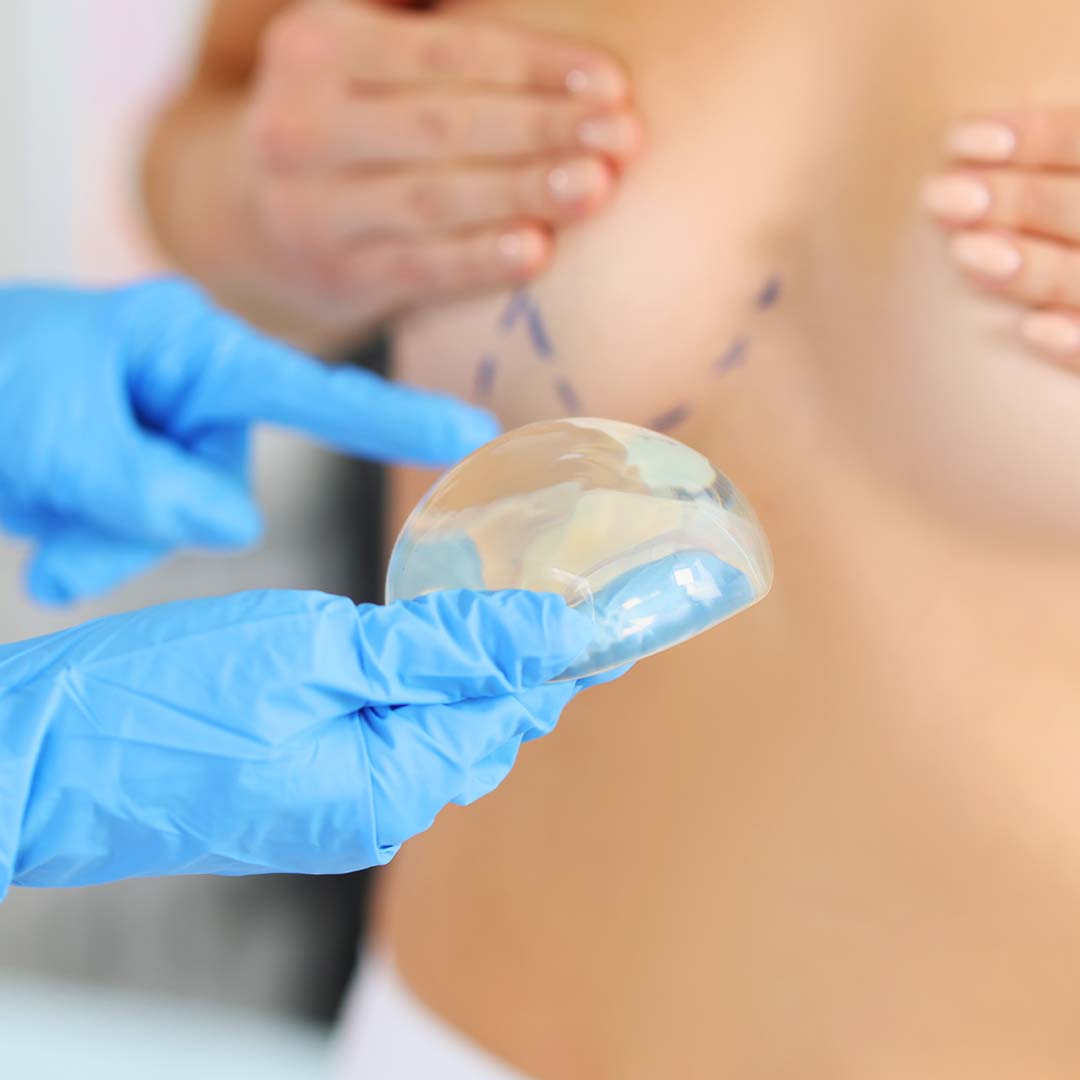Breast Augmentation
Breast augmentation, also known as breast enlargement, is a surgical procedure to increase the size of the existing breasts using implant prostheses. During a breast augmentation surgery, issues related to breast tissue sagging or looseness can also be addressed. This procedure is commonly chosen by women who are dissatisfied with their breast size. Breast augmentation can be preferred to correct breast sagging and volume loss that occurs after breastfeeding or significant weight loss.
By choosing Quality Life Health Travel, you can achieve the appearance that you desire.

Breast Augmentation Procedure
Breast augmentation surgeries are typically performed in a hospital setting under general anesthesia. When placing breast implants, a 4-5 centimeter incision is usually made. The location of this incision can be in the breast crease, underneath the breast’s lower part, or in the armpit area. The breast implant is inserted beneath the breast tissue or behind the chest muscle through the incision site.
The incision is then closed with stitches. While the surgical incisions may not completely disappear, they tend to fade over time and are generally inconspicuous since they are placed in areas that do not draw attention.
Different types of breast implants made with various filling materials are available. The appropriate choice of the implant depends on the patient’s condition and breast tissue. The size and type of implant can be decided in consultation with your surgeon.
Breast Augmentation Aftercare
After breast augmentation surgery, wearing a sports bra or bandage is recommended. If self-absorbing stitches are not used, the stitches are usually removed approximately 10 days after surgery. If the breast implant is placed behind the chest muscle, there may be limited arm movement during the first few days post-surgery. It is advisable to avoid strenuous arm movements during this time.
After the surgery, swelling, numbness around the nipple area, and bruising may occur. However, these effects usually subside on their own within a week. Patients can typically return to their normal daily activities and work within 3-4 days after breast augmentation surgery. Avoiding heavy lifting and exercise is recommended. Getting adequate rest accelerates the postoperative recovery. It’s also crucial to follow your surgeon’s recommendations, maintain a healthy diet, and avoid unhealthy habits.
How Long Does a Breast Augmentation Surgery Take?
Breast augmentation surgeries typically take about 1.5 to 2 hours.
What Is the Lifespan of Silicone Breast Implants?
The silicone used in breast augmentation surgeries is designed to last a lifetime. However, after 10 years, there may be potential leakage from the silicone’s outer surface, so annual check-ups are advisable.
Does Silicone Breast Implants Cause Numbness?
Breast augmentation surgery with silicone implants does not typically lead to numbness in any part of the breast.
Do Scars Remain After Breast Augmentation Surgery?
In any surgical procedure involving an incision, there will be some degree of scarring. However, in breast augmentation surgeries, the incisions are placed in locations where the scars are not noticeable and can be concealed.
How Many cc Should the Silicone Prosthesis Be?
The size of the silicone prosthesis should be determined based on your body structure and measurements. Additionally, the individual’s preferences are also very important when selecting the size of the silicone implant. When choosing the cc size of the silicone implant, the distance between the back and the chest should also be taken into account. Furthermore, the length of the circular line passing through the nipple is important in determining the cup size. Cup sizes are typically denoted as A, B, C, D, DD, E, and so on.
How Many cc of Silicone Increases the Breast Size by How Many Cups?
Breast Augmentation Size Guide
From A cup to B cup 250 or 300 cc
From A cup to C cup 300 or 350 cc
From A cup to D cup 370 or 430 cc
From B cup to C cup 250 or 350 cc
From B cup to D cup 350 or 400 cc
From B cup to DD cup 400 or 450 cc
From C cup to D cup 300 or 350 cc
From C cup to DD cup 370 or 450 cc
From C cup to E cup 450 or 550 cc
From D cup to DD cup 300 or 400 cc
From D cup to E cup 450 or 600 cc
Silicone size is determined based on the cup size. If you aim to increase by one cup size after breast augmentation surgery, the size of the silicone implant should be approximately 150-175 cc. If you want an increase of up to 15 cm, which corresponds to a C cup size, the cc amount of the silicone implant to be used can be around 300-350 cc.
Up to 11 cm: A Cup
Up to 13 cm: B Cup
Up to 15 cm: C Cup
Up to 17 cm: D Cup
Up to 19 cm: DD Cup
Up to 21 cm: E Cup
Up to 23 cm: F Cup
Which Is Better: Round or Teardrop Silicone Implants ?
Both types of silicone implants have their own advantages and disadvantages. When selecting a breast prosthesis, the patient’s preferences are significant. Round silicone implants are generally preferred since they do not carry the risk of rotation. Teardrop (shaped) silicone implants are a more economical option. They may provide a more natural appearance and make breast shaping easier. However, the biggest risk with teardrop silicone implants is displacement or rotation. For this reason, experts often prefer round silicone implants in breast augmentation surgeries.

















